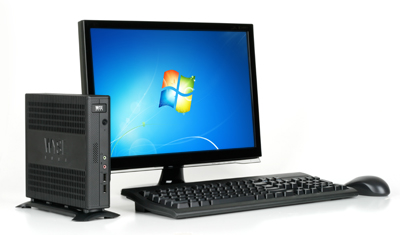Wyse Touts Green Benefits Of Zero Client Computing

Wyse’s Xenith zero clients use just a tenth of the power of traditional desktop deployments
Cloud client computing company Wyse Technology says companies can reduce their power consumption by 50-70 percent by switching to a virtual desktop infrastructure using thin or zero clients.
Speaking to eWEEK Europe at the Citrix Synergy event in Barcelona, the company’s European vice president Mark Jordan said that Wyse’s Xenith zero client, built specifically for Citrix XenDesktop, uses just 7W of power when it is running, compared to a PC which uses 70-100 Watts. With energy prices currently climbing steeply in the UK, this could lead to significant cost savings.
“Look at the current UK situation and the cost increases in power. On an estate of devices, in an 18-24 month period, you’re going to be paying for the desktop in the cost savings,” said Jordan.
“If you look at the challenges that everybody’s got at the moment around how to maximise their budget, it’s coming out of various areas, but the green side is one which is often overlooked,” he added. “Getting enough power in if you’re running 2,000 PCs all using 100W – and that’s excluding the monitor and the other bits and pieces – it’s a big challenge.”
Green IT still on the agenda
Wyse claims its Xenith zero client eliminates many of the management and security issues associated with traditional client devices, lowering the barriers for mainstream adoption of desktop virtualisation. Earlier this year, the company launched Xenith Pro, with twice the processing power, for Citrix HDX and support for dual high-resolution digital displays.
 Wyse claims that, as well as changing the user experience and economics of desktop computing for office-based workers, cloud client computing has a range of environmental benefits. It uses fewer materials, meaning that less energy is used in manufacturing and disposal; there are fewer carbon costs in transportation; it has 2-3 times the service life of traditional PC deployments; and it has low heat output, meaning less power is needed for air-conditioning.
Wyse claims that, as well as changing the user experience and economics of desktop computing for office-based workers, cloud client computing has a range of environmental benefits. It uses fewer materials, meaning that less energy is used in manufacturing and disposal; there are fewer carbon costs in transportation; it has 2-3 times the service life of traditional PC deployments; and it has low heat output, meaning less power is needed for air-conditioning.
Over the last couple of years, the green credentials of IT have slipped out of the spotlight, as companies focus more on cost cutting, amid increasing financial pressure. However, according to David Angwin, Wyse’s European director of marketing, organisations are still concerned about their environmental impact.
“Before the credit crunch, green IT was the topic to talk about. It’s just moved down the agenda,” said Angwin. “But in almost every large project we’re involved with, one of the questions that we get early on is about power consumption.”